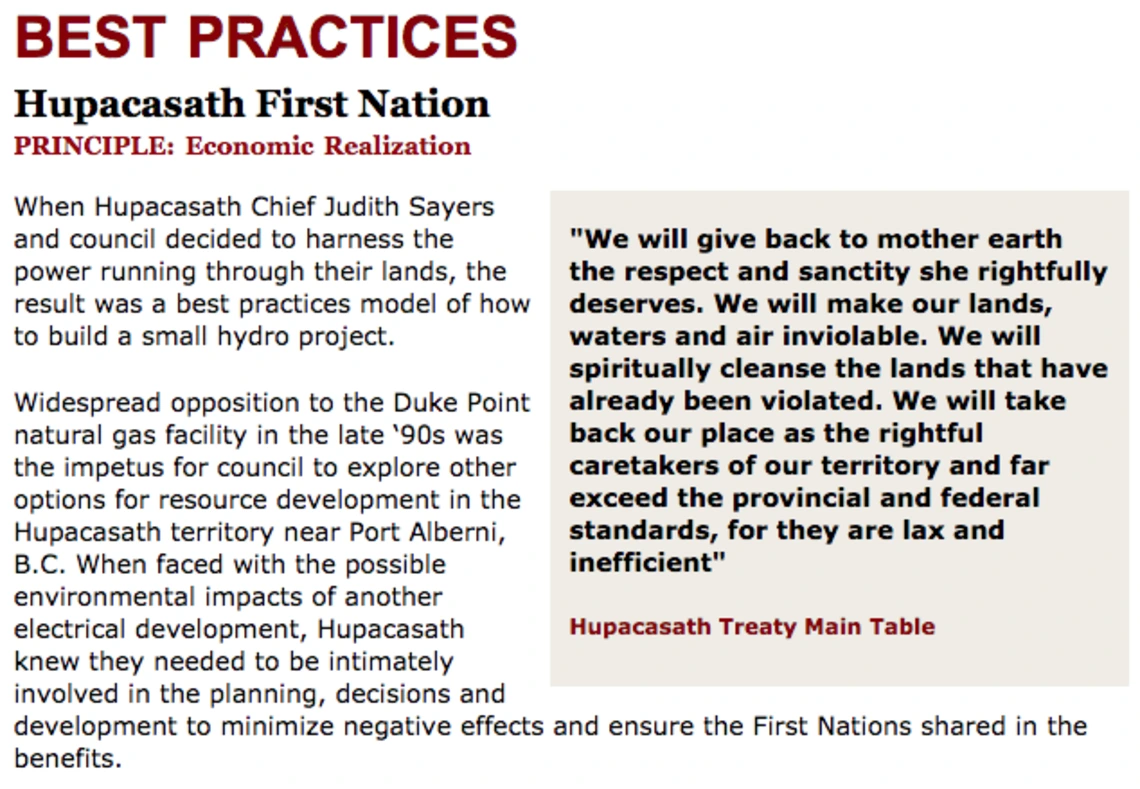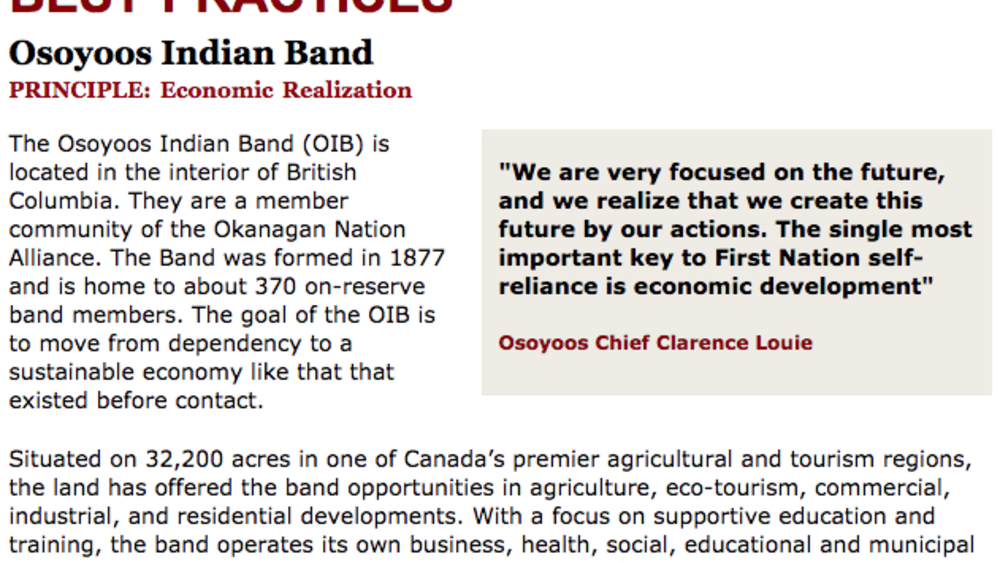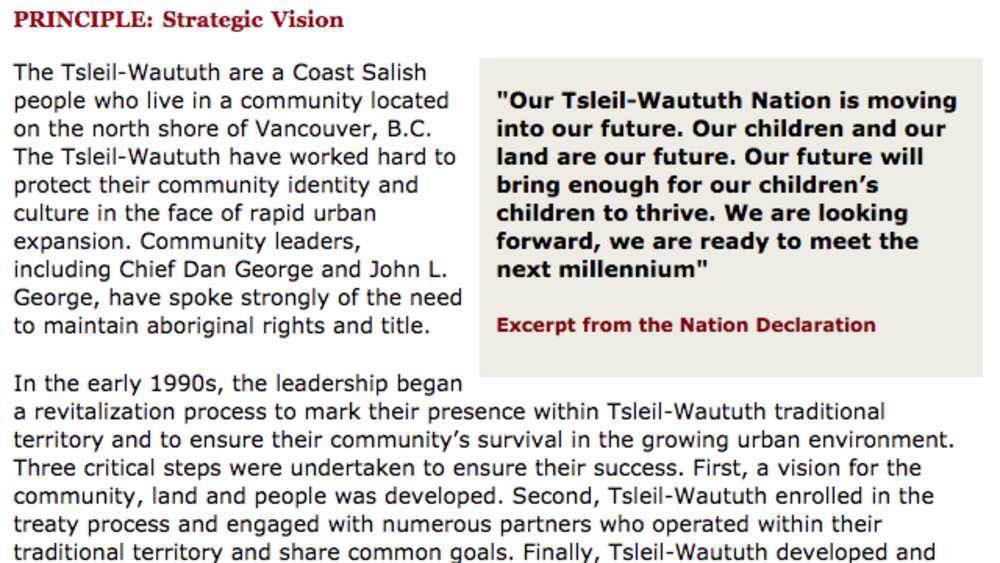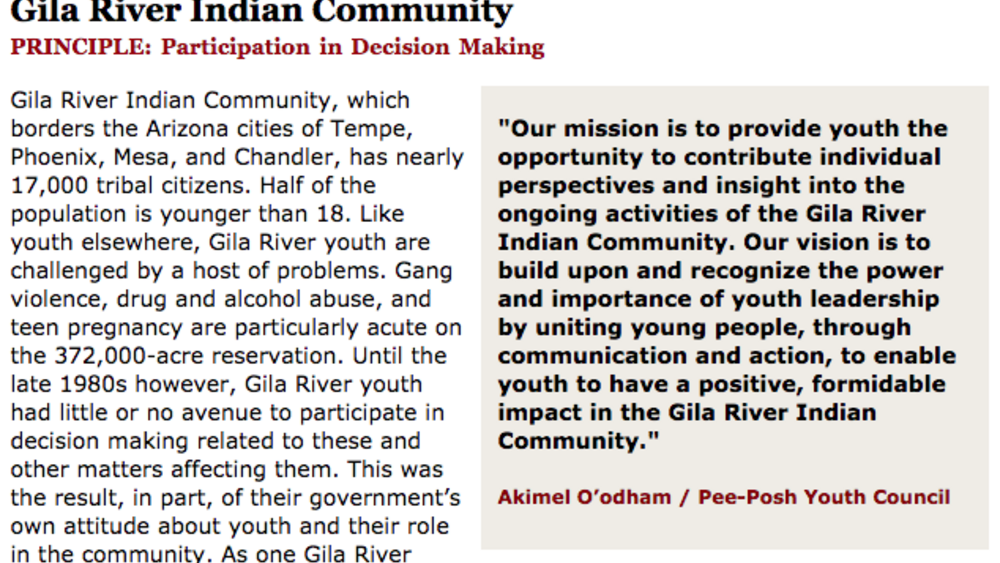When Hupacasath Chief Judith Sayers and the council decided to harness the power running through their lands, the result was a best practices model of how to build a small hydro project. Widespread opposition to the Duke Point natural gas facility in the late '90s was the impetus for the council to explore other options for resource development in the Hupacasath territory near Port Alberni, B.C. When faced with the possible environmental impacts of another electrical development, Hupacasath knew they needed to be intimately involved in the planning, decisions and development to minimize negative effects and ensure the First Nations shared in the benefits...
Additional Information
National Centre for First Nations Governance. "Best Practices Case Study (Economic Realization): Hupacasath First Nation." A Report for the National Centre for First Nations Governance. The National Centre for First Nations Governance. Canada. June 2009. Case Study. (https://fngovernance.org/wp-content/uploads/2020/06/ER_Hupacasath.pdf, accessed March 7, 2023)




